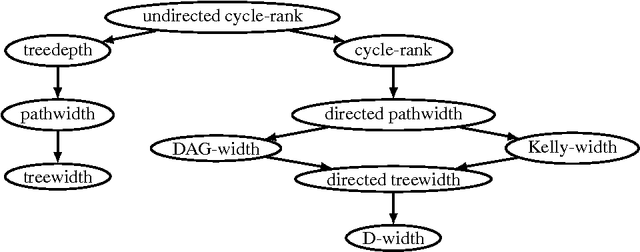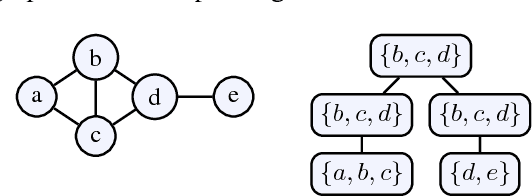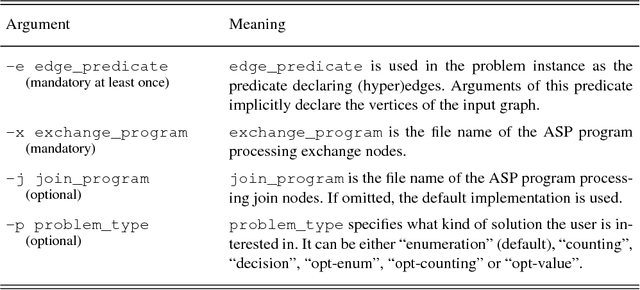Bernhard Bliem
Clique-Width and Directed Width Measures for Answer-Set Programming
Dec 30, 2016


Abstract:Disjunctive Answer Set Programming (ASP) is a powerful declarative programming paradigm whose main decision problems are located on the second level of the polynomial hierarchy. Identifying tractable fragments and developing efficient algorithms for such fragments are thus important objectives in order to complement the sophisticated ASP systems available to date. Hard problems can become tractable if some problem parameter is bounded by a fixed constant; such problems are then called fixed-parameter tractable (FPT). While several FPT results for ASP exist, parameters that relate to directed or signed graphs representing the program at hand have been neglected so far. In this paper, we first give some negative observations showing that directed width measures on the dependency graph of a program do not lead to FPT results. We then consider the graph parameter of signed clique-width and present a novel dynamic programming algorithm that is FPT w.r.t. this parameter. Clique-width is more general than the well-known treewidth, and, to the best of our knowledge, ours is the first FPT algorithm for bounded clique-width for reasoning problems beyond SAT.
D-FLAT: Declarative Problem Solving Using Tree Decompositions and Answer-Set Programming
Oct 06, 2012



Abstract:In this work, we propose Answer-Set Programming (ASP) as a tool for rapid prototyping of dynamic programming algorithms based on tree decompositions. In fact, many such algorithms have been designed, but only a few of them found their way into implementation. The main obstacle is the lack of easy-to-use systems which (i) take care of building a tree decomposition and (ii) provide an interface for declarative specifications of dynamic programming algorithms. In this paper, we present D-FLAT, a novel tool that relieves the user of having to handle all the technical details concerned with parsing, tree decomposition, the handling of data structures, etc. Instead, it is only the dynamic programming algorithm itself which has to be specified in the ASP language. D-FLAT employs an ASP solver in order to compute the local solutions in the dynamic programming algorithm. In the paper, we give a few examples illustrating the use of D-FLAT and describe the main features of the system. Moreover, we report experiments which show that ASP-based D-FLAT encodings for some problems outperform monolithic ASP encodings on instances of small treewidth.
 Add to Chrome
Add to Chrome Add to Firefox
Add to Firefox Add to Edge
Add to Edge